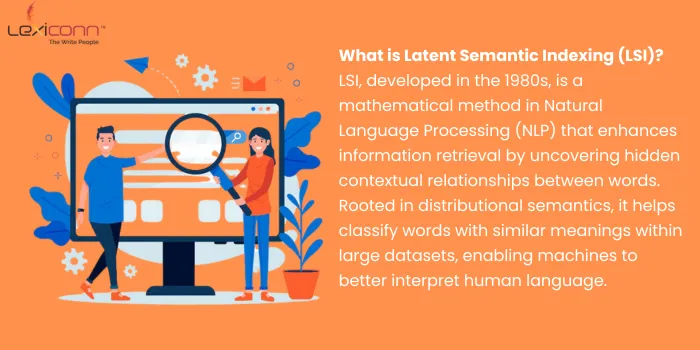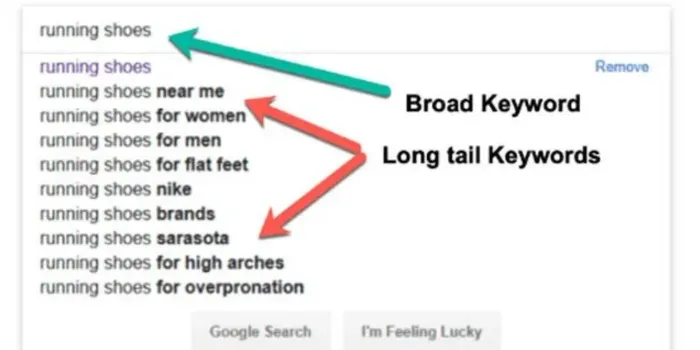

|
Mark walked into the Monday morning meeting with a worried look. As the head of digital content, he had some tough news to share. "Our recipes website isn't showing up in Google searches anymore," he told his team. "Last year, we were on the first page for most cooking terms. Now? We're nowhere to be found." The room fell silent. Their website traffic had dropped by 60%, and with it, their online sales. |
In 2024, SEO content writing has evolved into a science of precision and purpose. Google’s algorithms are smarter than ever, prioritizing content that’s not just good but also helpful, original, and user-focused. In fact, Google’s March 2024 Core Update led to a 40% drop in low-quality, unoriginal content appearing in search results.
The message is clear—only businesses with meaningful, well-crafted content can stay ahead.
The best part? Writing for both Google and your audience isn’t as complicated as it seems. It’s about creating valuable, engaging articles that answer your audience’s questions while aligning with search engine expectations. Forget outdated tricks like keyword stuffing—success now lies in delivering clarity, trust, and usability.
So, how can your business create content that ranks high on Google and relates with real people? Scroll on, and we’ll break it down for you.
Every search query tells a story. Some people are looking for answers, others for recommendations, and some are ready to make a purchase. Understanding why your audience is searching is the secret to creating content that ranks high and delivers real value.
Search intent refers to the purpose behind a user’s query. Google, with its advanced algorithms, aims to match content to these intents, which typically fall into four categories:
Creating content aligned with search intent ensures that your message reaches the right audience at the right time.
For example:
Failing to align content with intent could mean lost opportunities, poor engagement, and wasted resources.
Featured Snippets—those concise answers displayed at the top of search results—are prime real estate. An Ahrefs study suggests that featured snippets can "steal" up to 30% of the traffic from the top-ranking result on a search engine results page (SERP). This indicates their significant impact on visibility and clicks and makes them a valuable target for optimizing content.
How can your business secure a snippet?
For instance, if your content includes a well-organized table comparing cloud storage plans, it stands a strong chance of being featured.
|
When you master search intent, you don’t just rank—you engage, convert, and grow. - LexiConn Content |
Search engines, now, favor websites that present information in an organized and comprehensive way. Topic clusters are a powerful framework for achieving this. Instead of isolated blog posts, this method uses a structured approach:
This structure signals to search engines that your site is a reliable and authoritative source for the subject, boosting visibility and credibility.
Content silos work as virtual “sections” on your website, grouping related articles under specific themes. For example:
Why Silos Work?
Example
Imagine you run a business blog for the retail industry. Your pillar content could be "The Complete Guide to E-Commerce Trends in 2024," and cluster articles could include:
By linking these articles together, you create a content network that performs better on search engines and provides more value to readers.
Generic keywords are highly competitive and often fail to address specific user needs. Long-tail keywords offer a solution. These keywords not only face less competition but also target users with clear intent. This leads to higher conversion rates.
|
What are Long-Tail Keywords? Long-tail keywords are phrases that are longer and more precise. |
For example:
Search engines no longer rely solely on exact keywords; they understand context through semantic variations. By using related terms and phrases, you enrich your content and make it more likely to rank for diverse queries.
For instance, if your primary keyword is “SEO strategies,” incorporating semantic variations like “content optimization,” “technical SEO,” or “Google ranking trends” enhances your article’s relevance. This process, often supported by Latent Semantic Indexing (LSI), helps search engines better grasp the breadth of your content.


Example
Let’s say you run a software solutions business. Instead of targeting "project management software," consider focusing on:
By integrating related terms like “collaboration tools”or “team productivity software,” you create content that ranks higher and appeals to niche audiences.
Google’s E-E-A-T framework—Experience, Expertise, Authoritativeness, and Trustworthiness—is critical for ranking high in search results and gaining user confidence. For businesses, it’s about proving your value and reliability in every piece of content.
Share real-world insights and firsthand knowledge to connect with your audience. Highlight practical examples, case studies, or customer testimonials to showcase your industry know-how.
Demonstrate your qualifications by featuring certified professionals or subject-matter experts in your content. Use bylines and author bios to add credibility to your content.
Build your brand’s authority by citing credible sources, partnering with reputable websites, and earning backlinks from high-authority domains. Data-driven content and actionable insights further solidify your reputation.
Secure your website optimization with HTTPS, maintain a consistent brand voice, and provide clear contact details. User-friendly policies, like returns or refunds, also boost trust.
Outdated information hurts your credibility and ranking. Review your content periodically, incorporating new trends, stats, and guidelines to ensure relevance and accuracy. A site that consistently updates its content signals reliability to search engines and users alike.
By embedding E-E-A-T into your content strategy, you position your business as a trusted, authoritative voice in your industry. This fosters loyalty and strengthens your competitive edge.
Search engines prioritize seamless UX, with Core Web Vitals measuring performance based on page speed, interactivity, and stability. By focusing on both UX and evolving search behaviors, you can align content with modern user needs and boost rankings effectively. High-ranking pages typically offer:
Interactive elements like videos and infographics further enhance engagement and reduce bounce rates, signaling quality to search engines.
With tools like Google Lens, visual search is gaining traction. Optimize content with:
This helps products and content appear in image-based search results, improving visibility.
Voice search favors conversational queries and concise answers. To optimize:
For example, a page on "Financial Management" using FAQ schema can provide direct answers to queries like, “How do I invest better?” enhancing engagement through voice-enabled devices.
AI-powered tools are transforming how businesses optimize their content for better rankings and engagement. These tools analyze top-performing pages for your target keywords and provide data-backed suggestions to refine content strategies.
LexiConn’s case study on Nuvama Wealth demonstrates how AI-driven blogging strategies led to significant web traffic growth and audience engagement. Strategic keyword use, coupled with optimized structure, helped align content with both user needs and Google’s algorithms.

Want to learn how to apply these techniques to your business?
Explore the full case study here.
Schema markup, or structured data, is a game-changer for SEO. By adding a special code to your website, it helps with website optimization and search engines understand your content more clearly, improving how your pages appear in search results. The result? More visibility, higher click-through rates (CTR), and better engagement.
Today, simply skimming the surface with generic content won’t cut it. Google and other search engines prioritize articles that offer in-depth, original insights. The key to standing out is creating content that is thoroughly researched, unique, and backed by solid data.
Search engines reward content writing that’s detailed, original, and useful. By focusing on creating comprehensive articles that offer unique solutions or new viewpoints, you build your content’s credibility, which can lead to higher rankings and better user engagement.
Backlinks are still one of the most important factors for improving your website's search engine ranking. However, it's not about how many backlinks you have but the quality and relevance of those links that matter most.
Links from trusted, authoritative domains send strong signals to search engines, indicating that your content is credible and valuable.
Internal linking is just as crucial. By strategically linking to relevant pages within your site, you help both search engines and users navigate your content more efficiently. Internal links:
Achieving SEO success requires continuous monitoring and refining. Advanced analytics tools like Google Analytics 4 (GA4)and Ahrefshelp you track key performance metrics to understand how users engage with your content. By focusing on these metrics, you can make data-driven decisions to improve your site’s visibility and ranking:
Analytics also help identify content gaps, allowing you to optimize underperforming areas and boost your rankings over time.
For businesses targeting specific regions, Local SEO is great. Optimizing for local search involves using location-specific keywords and ensuring accurate business listings across the web. Some strategies to enhance local visibility include:
Ensuring accuracy in business listings, reviews, and citations boosts local search visibility. Structured data, such as Local Business Schema, helps search engines understand your relevance to local audiences.
Looking to drive more traffic to your website and improve your Google rankings? LexiConn is here to help! Based in Mumbai, we specialize in crafting high-quality, SEO-optimized content writing that not only engages your target audience but also boosts your online presence.
Whether you're a small business or a large corporation, our expert team understands the nuances of both local and international markets and creates tailored content to meet your unique goals.
With 15+ years of experience helping businesses shine online, we ensure that your message stands out. Ready to take your website to the next level? Get in touch with us today! You can write to us at [email protected] or book a free 30-minute session with us to discuss your content strategy. Book your slot today!
Achieving high rankings with SEO articles in 2024 demands a strategic blend of advanced techniques, ongoing optimization, and a focus on creating content that truly resonates with your audience. By aligning content with user intent, utilizing topic clusters, adapting to emerging search behaviors, and incorporating data-driven strategies, you can enhance both visibility and authority.



I have read and accept the Privacy Policy
Read More